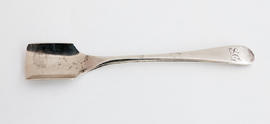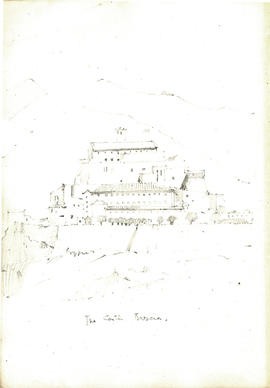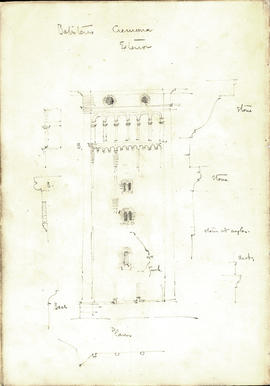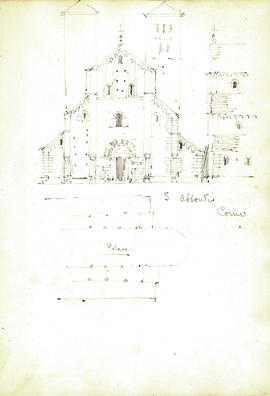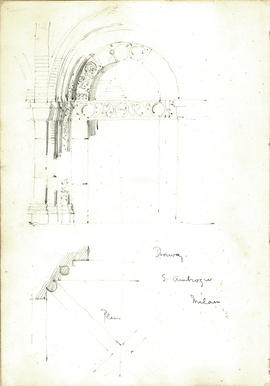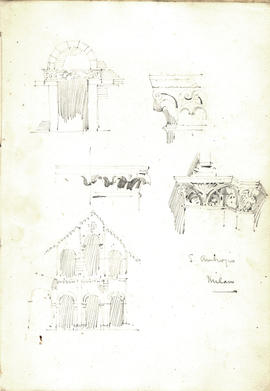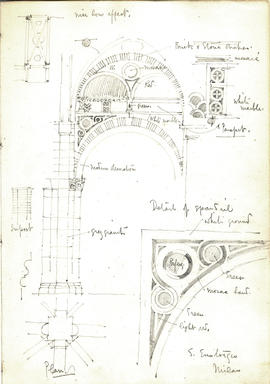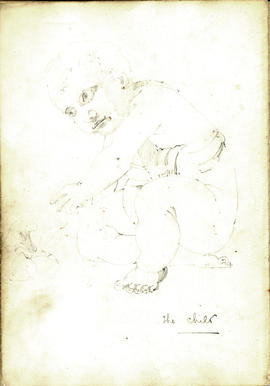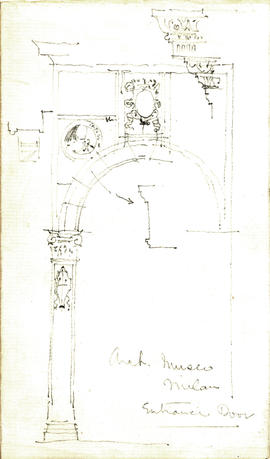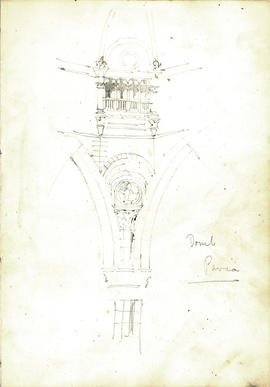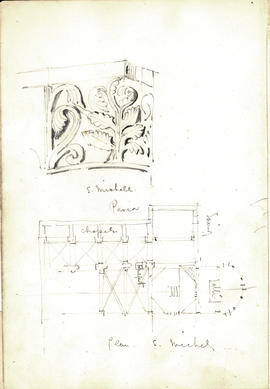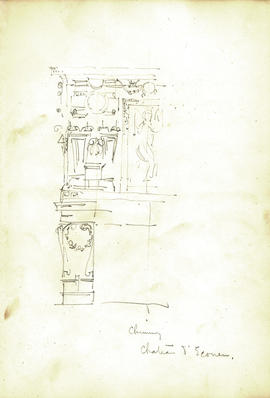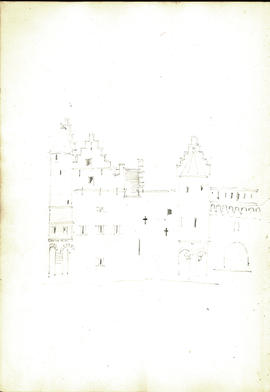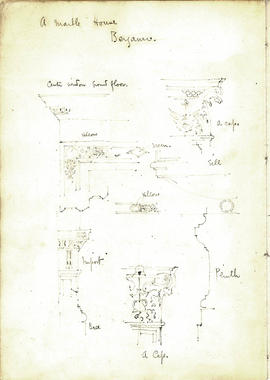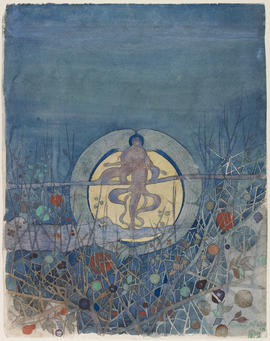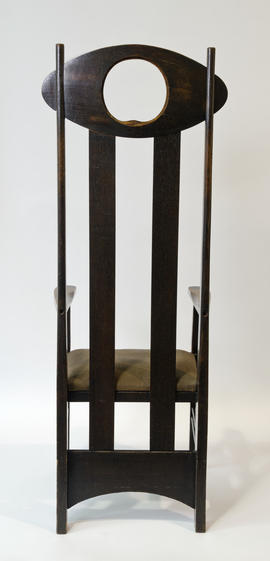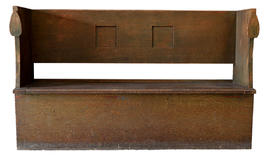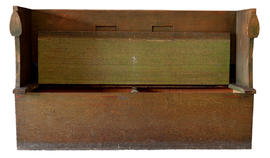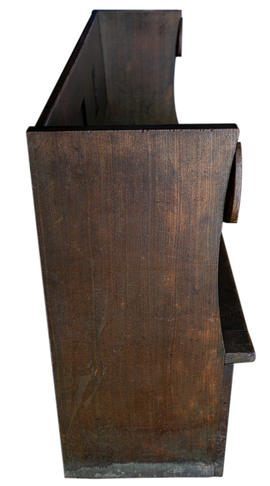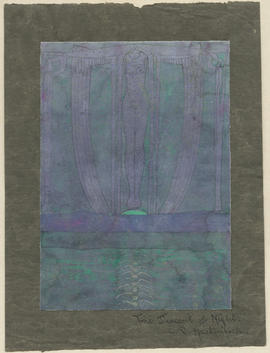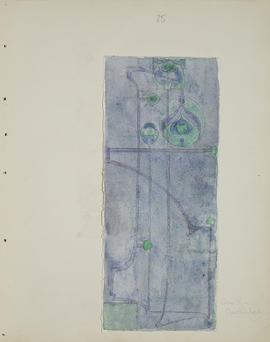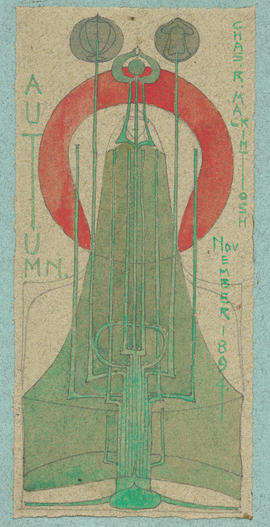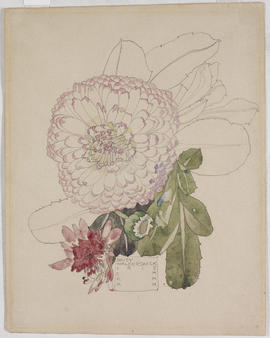Bound in volume, The Magazine, November 1894. 'Behind a stylised tree stands another of Mackintosh's mysterious female figures, but this is the first one to appear that is not meticulously drawn. Only the head is shown in any detail, and the shape of the body is hidden by a voluminous cloak from which not even its limbs appear. This figure was to be repeated many times, becoming more and more stereotyped until, with the banners designed for the Turin Exhibition in 1902, the head is the only recognisably human part of a figure with a twelve-foot long, pear shaped torso. In 1895-96, Mackintosh was to develop this drawing into a poster for the Scottish Musical Review (Howarth, p1, 9F). The same cloaked figure appears with similar formal emblems at the ends of the branches of the bush.' (Roger Billcliffe).

